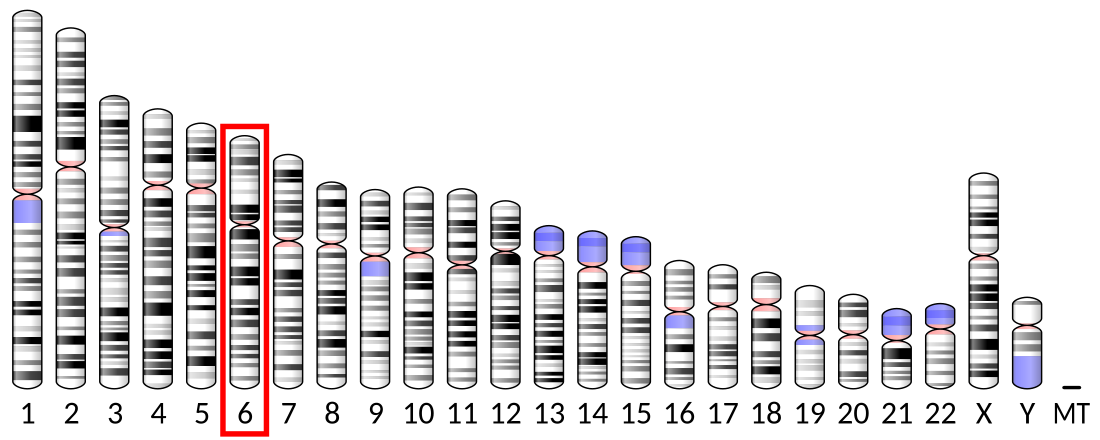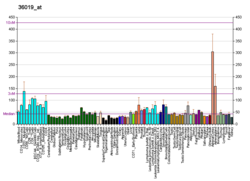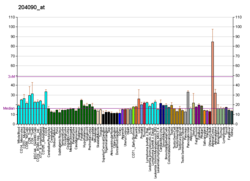Top Qs
Timeline
Chat
Perspective
STK19
Protein-coding gene in humans From Wikipedia, the free encyclopedia
Remove ads
Serine/threonine-protein kinase 19 is a protein that in humans is encoded by the STK19 gene[5][6][7] and is involved in DNA repair, specifically the transcription-coupled nucleotide excision repair (TC-NER) pathway.[8][9]
The name is misleading — although STK19 was initially identified as a serine/threonine kinase, analysis of the crystal structure revealed absence of the kinase domain [10] and it does not seem to possess any kinase activity.[11]
This gene localizes to the major histocompatibility complex (MHC) class III region on chromosome 6 and expresses two transcript variants.[7]
Remove ads
Structure

STK19 contains 3 different protein-interaction domains, which are essential to its function in DNA repair: the CSA interacting domain, RNA polymerase II (RNAPII) interacting domain, and UVSSA interacting domain.[9] These domains allow STK19 to incorporate into the Transcription-Coupled DNA Repair (TCR) complex, which is recruited to RNA Polymerase II stalled at DNA lesions.[9]
Part of the UVSAA binding domain may also interact with XPD, a protein in the TFIIH (transcription factor IIH) complex. This complex is recruited to the TCR and is involved in excising the damaged DNA. STK19 binding to XPD is theorized to help optimally position the TFIIH ATPase subunits XPD and XPB onto the DNA in front of the lesion.[9]
Remove ads
Role in transcription coupled nucleotide excision repair
STK19 is involved in transcription-coupled nucleotide excision repair (TC-NER), a DNA repair pathway that preferentially detects and removes DNA damage in portions of the genome that are being actively transcribed (copied from DNA into RNA). By contrast, the non-transcribed strand and portions of the genome not under active transcription are repaired more slowly, using global genome nucleotide excision repair (GG-NER).[8]
Remove ads
See also
References
Further reading
Wikiwand - on
Seamless Wikipedia browsing. On steroids.
Remove ads






